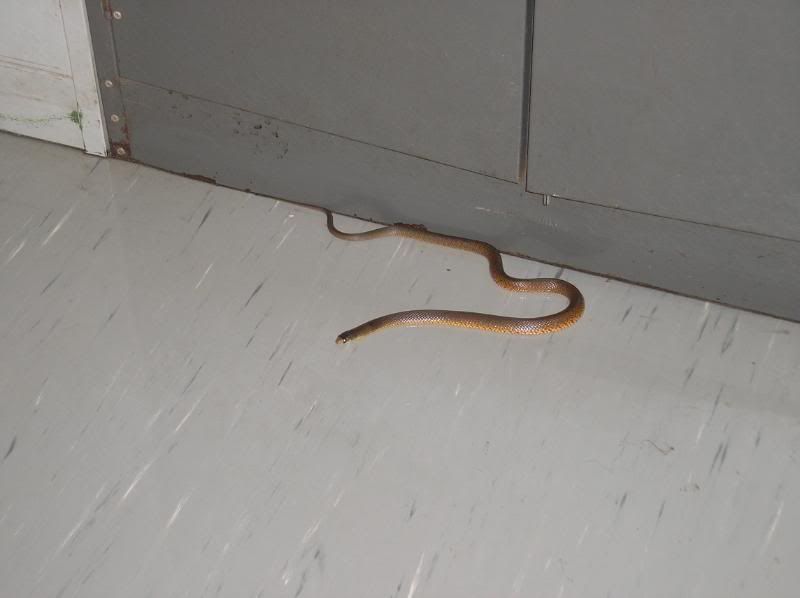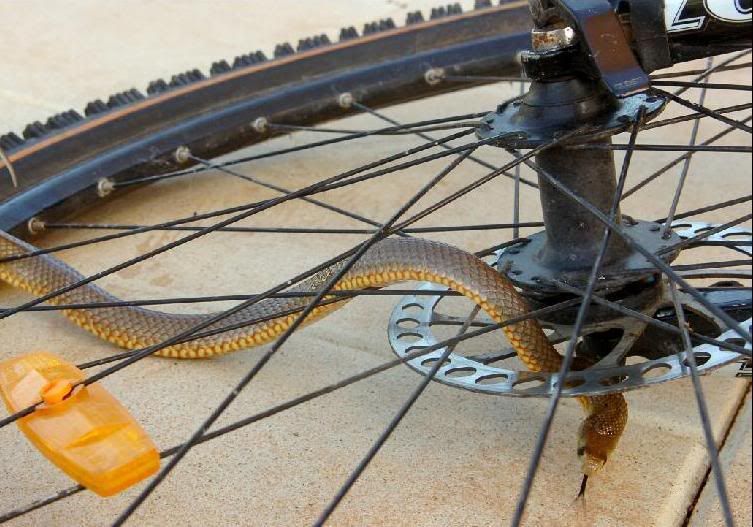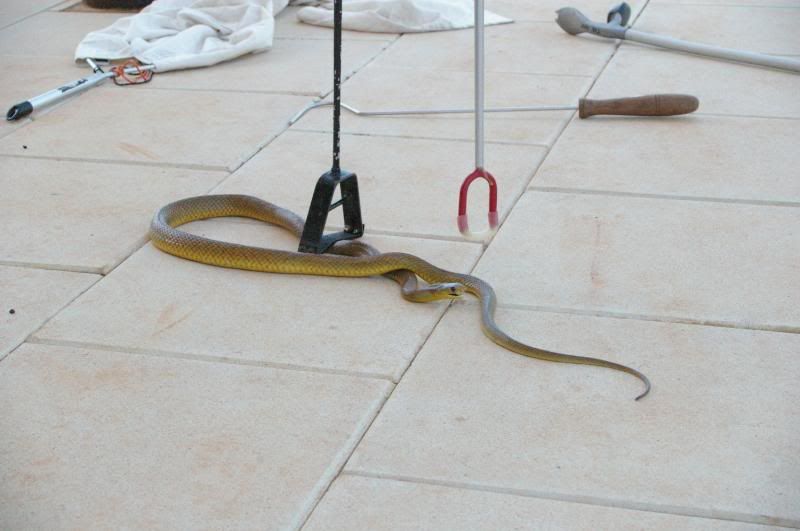Jonno from ERD
Very Well-Known Member
G'day guys,
I know there are several people here interested in Brown Snakes (Pseudonaja sp) that may not have access to some of the academic work that has recenly being published on their taxonomy by Adam Skinner from SA uni/museum.
I've just read the paper, and thought I would summarise it (albeit very basically) here for everyone.
Before the publication of this paper, there were 7 recognised species of Pseudonaja from Australia and PNG.
Pseudonaja textilis - Eastern Brown Snake
Pseudonaja modesta - Ringed Brown Snake
Pseudonaja ingrami - Ingrams Brown Snake
Pseudonaja affinis - Dugite
Pseudonaja inframacula - Peninsula Brown Snake
Pseudonaja guttata - Speckled Brown Snake
Pseudonaja nuchalis - Western Brown Snake
There has been a little bit of taxonomical work on them previously but none of it has ever really been accepted in the last 20 odd years (from memory). It's always been known that P.nuchalis is a species complex, but nobody was ever sure exactly how many species were contained within it. There are 30+ colour and pattern variants and they are distributed through nearly every mainland state and territory so it was a massive job to work it out.
Basically, they found that every species apart from Pseudonaja nuchalis were valid, and that P.nuchalis were infact three distinct species.
Pseudonaja aspidoryncha - Distinguishing features include a white to grey mouth lining (as opposed to blue/black in traditional P.nuchalis), a higher number of ventral scales. They share the strap like rostral scale with P.nuchalis. They are confined to "southern-central" Australia. A bad photo is attached of one I caught near Renmark, SA.
Pseudonaja mengdeni - Distinguishing features include a blue-black mouth lining (shared only with P.nuchalis), a lower dorsal scale count over the nape and apparently a different snout shape (rounded as opposed to "chisel shaped"). There are two distinct colour forms of P.mengdeni, the famous "orange bodied, black headed" form and the "pale head, grey nape" form. They are distributed through western and central Australia. Attached is a photo of the "orange bodied, black headed" form of animal captured in Alice Springs.
Pseudonaja nuchalis - Distinguishing features include a blue-black mouth lining (shared only with P.mengdeni), a strap like rostral scale and "chisel shaped" snouth (shared only with P.aspidoryncha), and a higher dorsal scale count over the nape. They also possess a lower ventral scale count than P.aspidoryncha. Colouration is variable, but is listed as "Dorsum light to medium brown; occasionally with a series of indistinct to distinct, broad, darker brown bands along body; scattered dark brown or black scales on neck; in many specimens the frontal, supraoculars and occiput are darker brown; snout pale brown, often
contrasting with darker posterior region of head; head and neck of some specimens dark brown or black; venter cream or pale yellow, commonly with subtle to conspicuous salmon spots (usually more evident anteriorly); ventrals typically with a brown or greyish brown sectorial marking laterally; chin cream". Distribution seems to be tropical Northern Australia (FNQ, Mt Isa maybe, Katherine, Darwin, Kimberlys etc). A photo of an animal captured in Katherine is attached.
Photo 1 - Pseudonaja aspidoryncha caught north of Renmark in Chowilla Game Reserve during the heat wave of New Years 2005/2006. This snake was close to 1.8 metres long and had a body temperature of 38.2 when caught - was lots of fun!
Photo 2 - Pseudonaja aspidoryncha caught north of Innamincka, SA on the Cordillo Downs Road. In total contrast to the above animal, it was incredibly placid.
Photo 3 - Pseudonaja nuchalis caught in Katherine, NT.
Photo 4 - Pseudonaja mengdeni caught in Alice Springs, NT.
I know there are several people here interested in Brown Snakes (Pseudonaja sp) that may not have access to some of the academic work that has recenly being published on their taxonomy by Adam Skinner from SA uni/museum.
I've just read the paper, and thought I would summarise it (albeit very basically) here for everyone.
Before the publication of this paper, there were 7 recognised species of Pseudonaja from Australia and PNG.
Pseudonaja textilis - Eastern Brown Snake
Pseudonaja modesta - Ringed Brown Snake
Pseudonaja ingrami - Ingrams Brown Snake
Pseudonaja affinis - Dugite
Pseudonaja inframacula - Peninsula Brown Snake
Pseudonaja guttata - Speckled Brown Snake
Pseudonaja nuchalis - Western Brown Snake
There has been a little bit of taxonomical work on them previously but none of it has ever really been accepted in the last 20 odd years (from memory). It's always been known that P.nuchalis is a species complex, but nobody was ever sure exactly how many species were contained within it. There are 30+ colour and pattern variants and they are distributed through nearly every mainland state and territory so it was a massive job to work it out.
Basically, they found that every species apart from Pseudonaja nuchalis were valid, and that P.nuchalis were infact three distinct species.
Pseudonaja aspidoryncha - Distinguishing features include a white to grey mouth lining (as opposed to blue/black in traditional P.nuchalis), a higher number of ventral scales. They share the strap like rostral scale with P.nuchalis. They are confined to "southern-central" Australia. A bad photo is attached of one I caught near Renmark, SA.
Pseudonaja mengdeni - Distinguishing features include a blue-black mouth lining (shared only with P.nuchalis), a lower dorsal scale count over the nape and apparently a different snout shape (rounded as opposed to "chisel shaped"). There are two distinct colour forms of P.mengdeni, the famous "orange bodied, black headed" form and the "pale head, grey nape" form. They are distributed through western and central Australia. Attached is a photo of the "orange bodied, black headed" form of animal captured in Alice Springs.
Pseudonaja nuchalis - Distinguishing features include a blue-black mouth lining (shared only with P.mengdeni), a strap like rostral scale and "chisel shaped" snouth (shared only with P.aspidoryncha), and a higher dorsal scale count over the nape. They also possess a lower ventral scale count than P.aspidoryncha. Colouration is variable, but is listed as "Dorsum light to medium brown; occasionally with a series of indistinct to distinct, broad, darker brown bands along body; scattered dark brown or black scales on neck; in many specimens the frontal, supraoculars and occiput are darker brown; snout pale brown, often
contrasting with darker posterior region of head; head and neck of some specimens dark brown or black; venter cream or pale yellow, commonly with subtle to conspicuous salmon spots (usually more evident anteriorly); ventrals typically with a brown or greyish brown sectorial marking laterally; chin cream". Distribution seems to be tropical Northern Australia (FNQ, Mt Isa maybe, Katherine, Darwin, Kimberlys etc). A photo of an animal captured in Katherine is attached.
Photo 1 - Pseudonaja aspidoryncha caught north of Renmark in Chowilla Game Reserve during the heat wave of New Years 2005/2006. This snake was close to 1.8 metres long and had a body temperature of 38.2 when caught - was lots of fun!
Photo 2 - Pseudonaja aspidoryncha caught north of Innamincka, SA on the Cordillo Downs Road. In total contrast to the above animal, it was incredibly placid.
Photo 3 - Pseudonaja nuchalis caught in Katherine, NT.
Photo 4 - Pseudonaja mengdeni caught in Alice Springs, NT.












